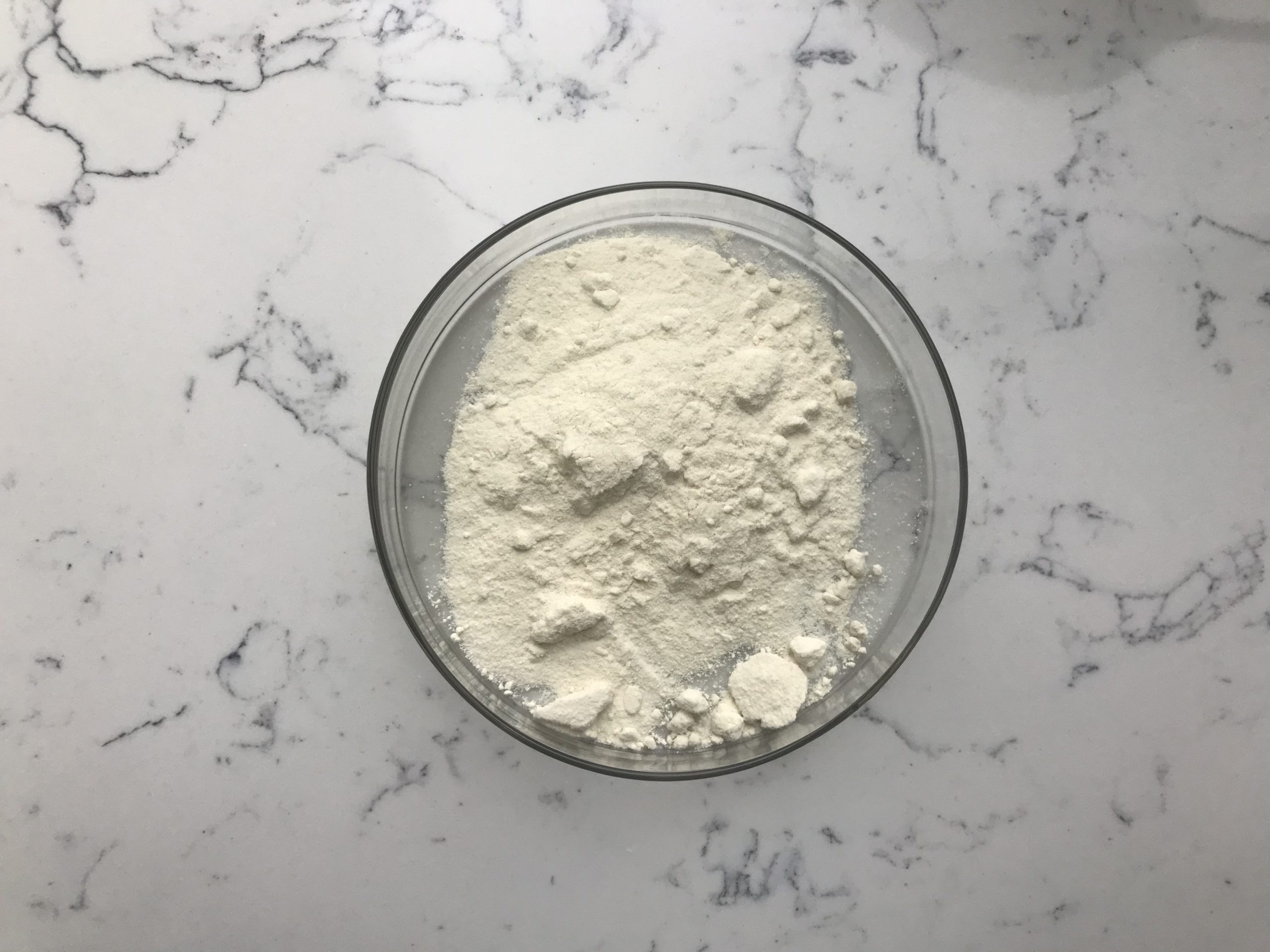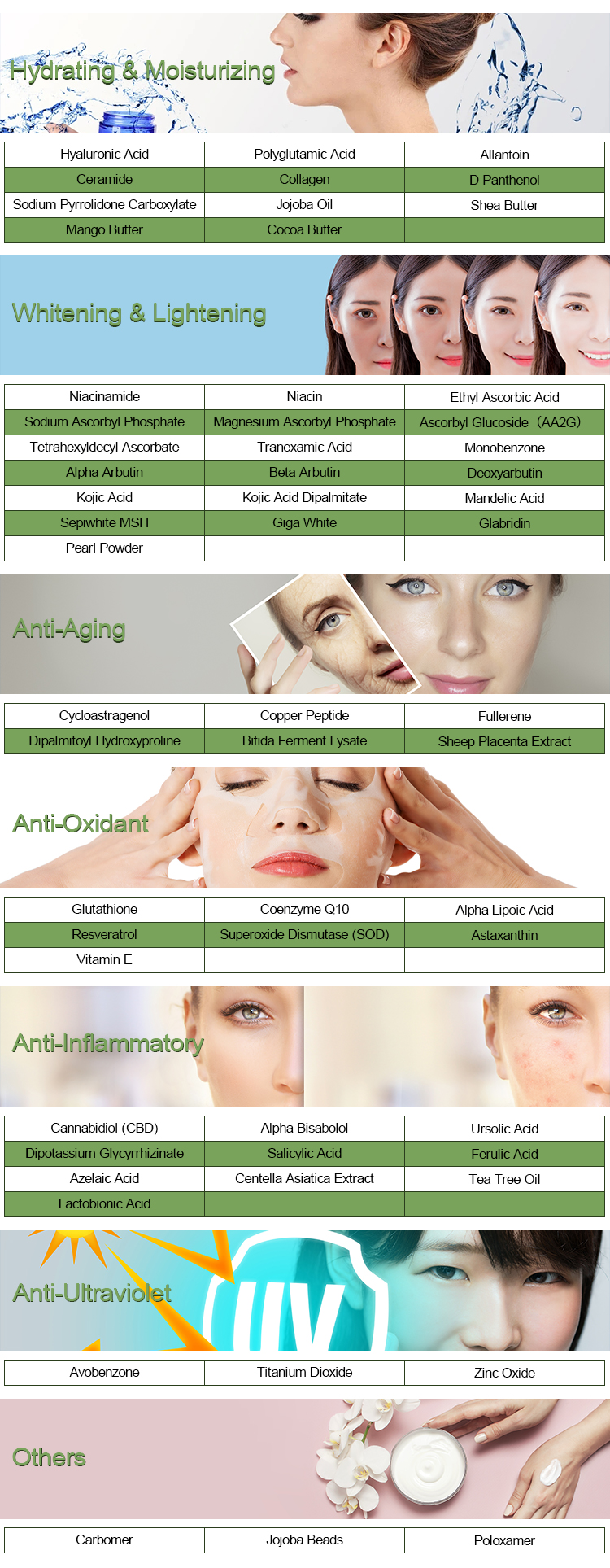Ceramide is a class of lipid molecules that play a crucial role in maintaining the structure and function of the skin’s outermost layer, the stratum corneum. They are essential components of the skin barrier, helping to retain moisture, protect against environmental stressors, and prevent water loss. The basic ingredients or components of ceramides include:
Sphingosine: Sphingosine is a long-chain amino alcohol and forms the core structure of ceramides.
Fatty Acids: Fatty acids are attached to the sphingosine backbone to form ceramides. These fatty acids can vary in length and saturation, contributing to the diversity of ceramide molecules.
Hydroxyl Group: Ceramides may also have a hydroxyl group (-OH) attached to the sphingosine backbone, further modifying their structure and function.
Amide Linkage: The fatty acid and sphingosine are connected by an amide linkage, which is a chemical bond formed between the carboxyl group of the fatty acid and the amino group of sphingosine.

Ceramides come in various types based on the specific fatty acids and other components attached to the core structure. These different types of ceramides have distinct functions in maintaining skin health and barrier function.
It’s important to note that while ceramides can be synthesized by the body, they are also used in skincare and cosmetic products to help improve skin hydration, barrier function, and overall skin health. These synthetic ceramides are often derived from plant sources or synthesized in a laboratory.
Please be aware that developments may have occurred beyond my knowledge cutoff date in September 2021, so I recommend consulting more recent and specialized sources for the latest information on ceramides.
The clinical application of Ceramide
Ceramide is a type of lipid molecule found naturally in the skin and other cell membranes. They play a crucial role in maintaining the barrier function of the skin and are involved in various cellular processes. Over the years, research has suggested several potential clinical applications of ceramides in the field of dermatology and beyond. Some of these applications include:
Skin Barrier Repair: Ceramide is essential components of the stratum corneum, the outermost layer of the skin. They help form the skin’s barrier, which prevents excessive water loss, protects against environmental factors, and maintains skin hydration. Topical application of ceramides can help restore the skin barrier in conditions such as eczema, psoriasis, and dry skin.
Atopic Dermatitis and Eczema: Ceramide-containing moisturizers and creams are often recommended for individuals with atopic dermatitis (eczema). These products can help alleviate the symptoms of itching, redness, and inflammation associated with these conditions.
Psoriasis: Ceramides may contribute to the regulation of skin cell growth and differentiation. As a result, ceramide-based treatments could potentially be developed to help manage psoriasis, a chronic skin condition characterized by the rapid buildup of skin cells that leads to scales and red patches.
Acne: Some studies suggest that ceramides might be beneficial for managing acne-prone skin. By helping to maintain a healthy skin barrier, ceramides could potentially reduce inflammation and irritation associated with acne.
Aging and Wrinkles: The skin’s natural ceramide levels tend to decline with age, which can contribute to skin dryness and the formation of wrinkles. Ceramide-containing skincare products may aid in maintaining skin moisture and elasticity, potentially reducing the appearance of fine lines and wrinkles.
Wound Healing: Ceramide is involved in the wound healing process, promoting the migration and proliferation of skin cells to repair damaged tissue. Research is ongoing to explore how ceramides might be used to enhance wound healing and reduce scarring.

Barrier Function in Other Tissues: Beyond the skin, ceramides also play a role in maintaining barrier f
unction in other tissues, such as the gastrointestinal tract and the lungs. Research is exploring potential therapeutic applications in conditions like inflammatory bowel disease and asthma.
It’s important to note that while ceramides show promise in various clinical applications, further research and clinical trials are needed to establish their efficacy and safety in different medical contexts. Always consult with a qualified healthcare professional before using any new treatment or skincare product.
